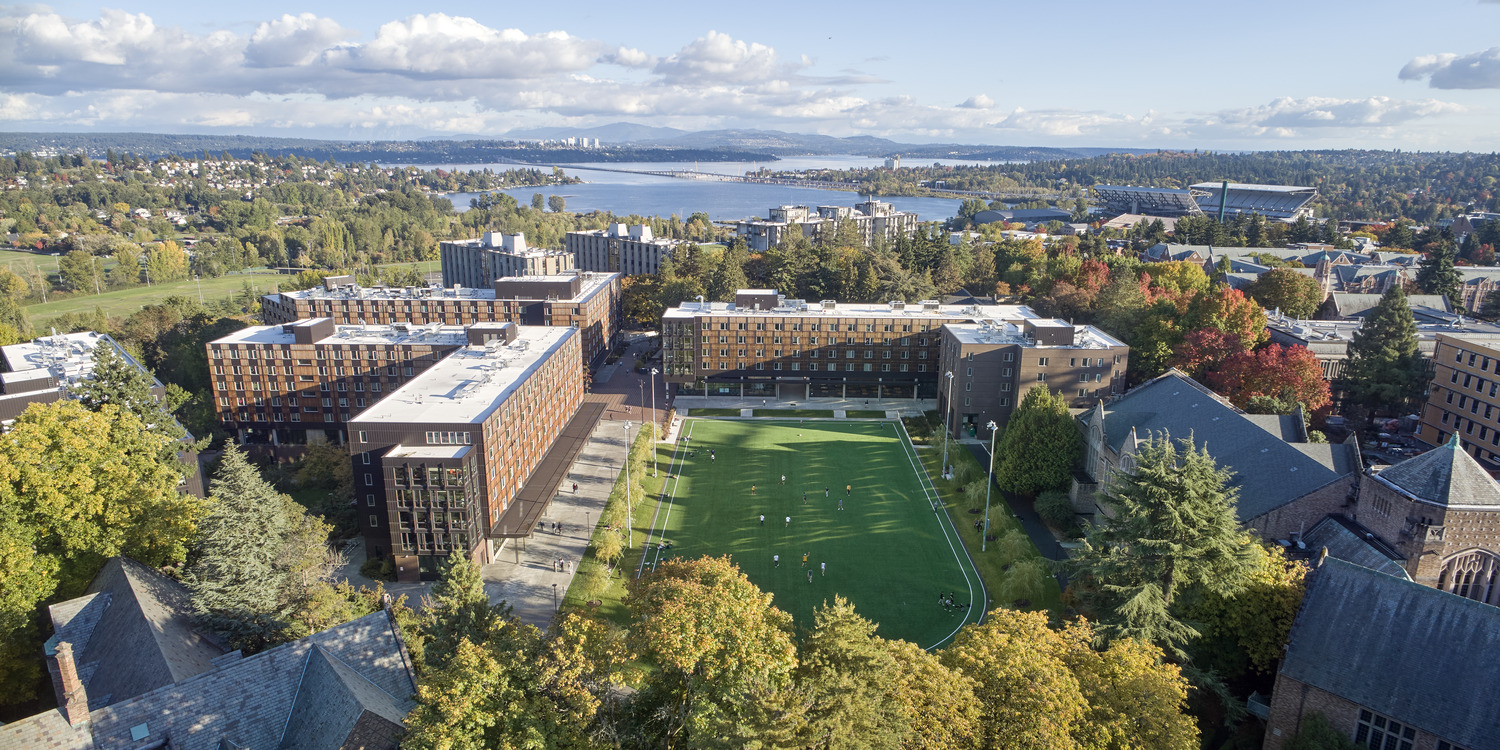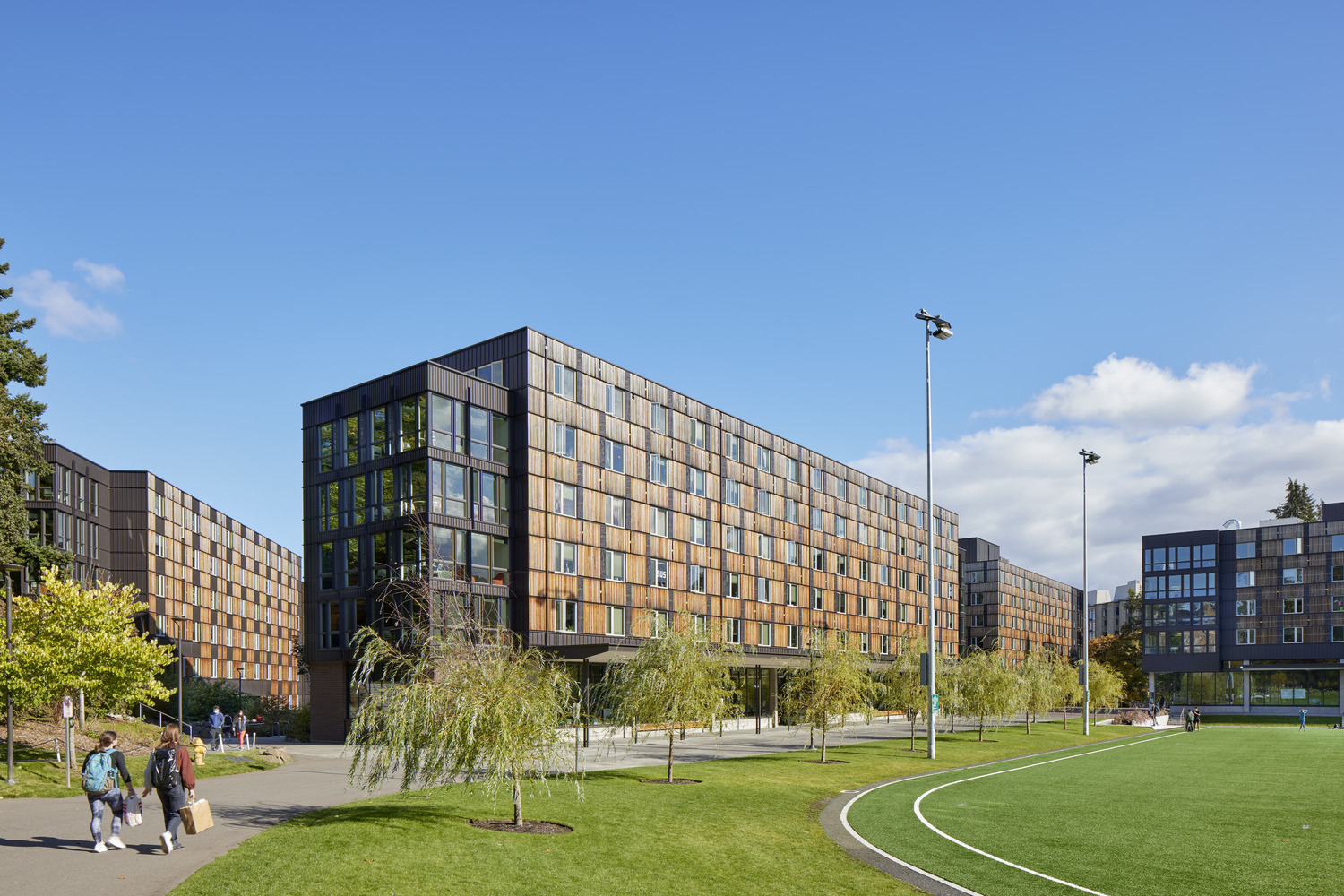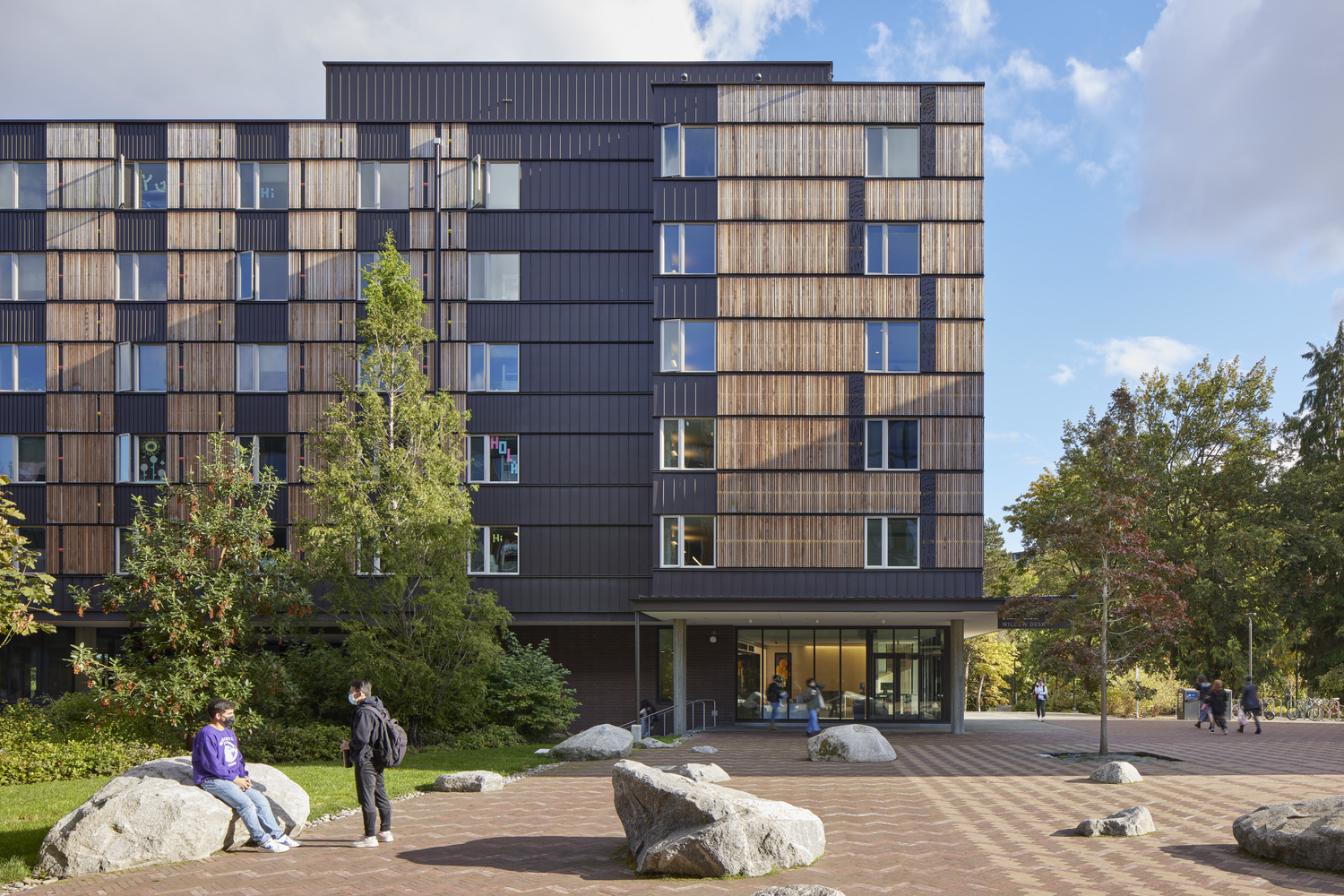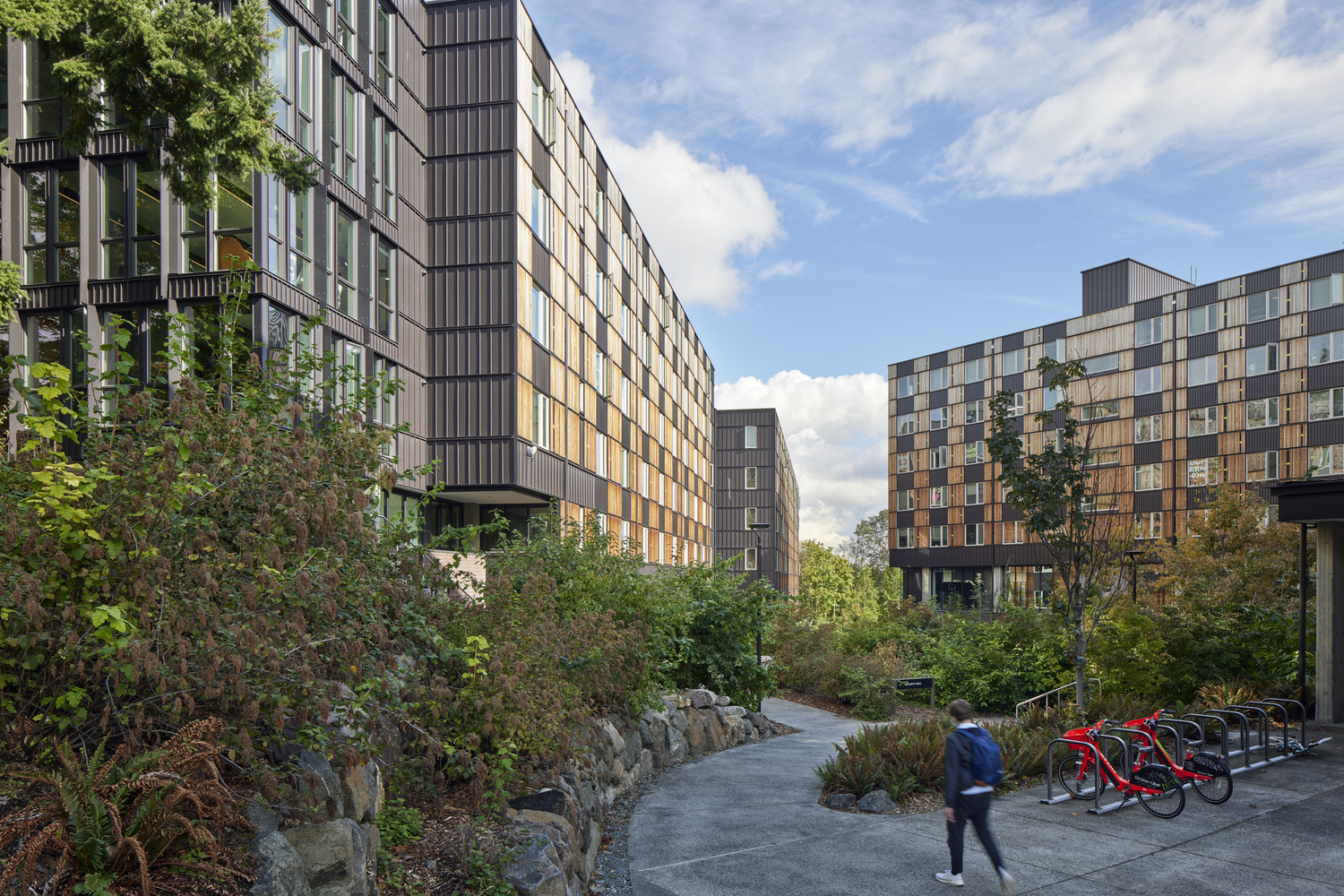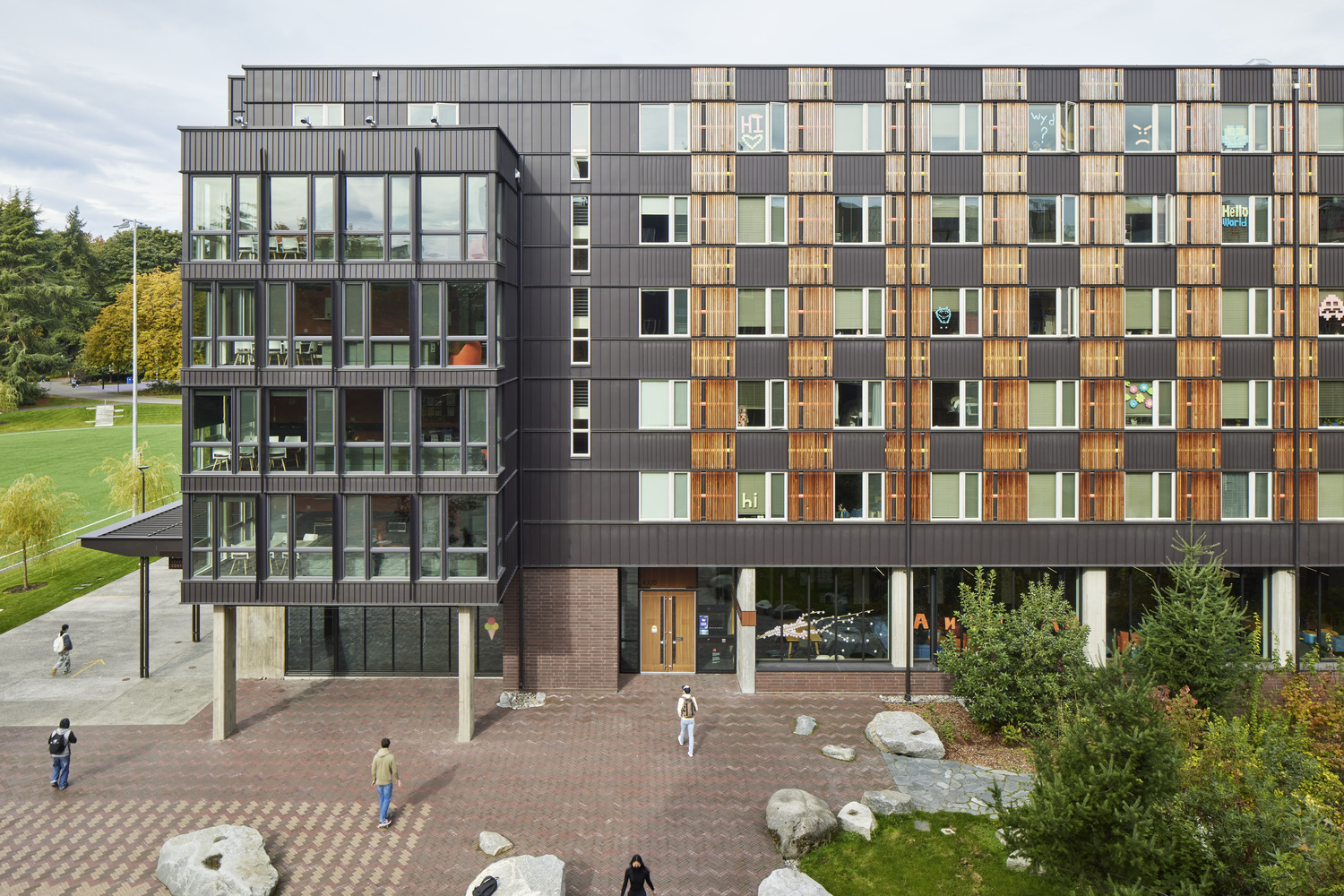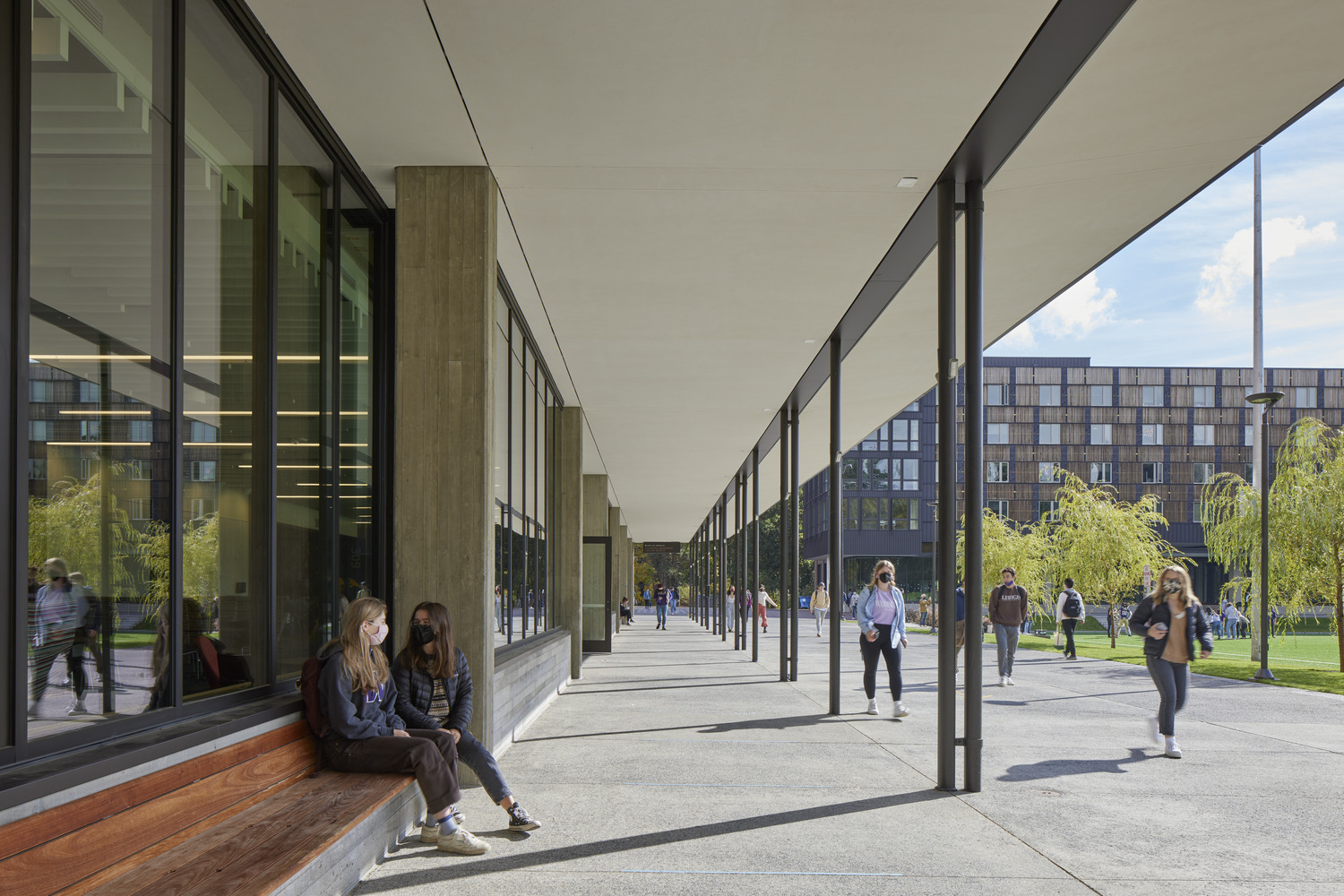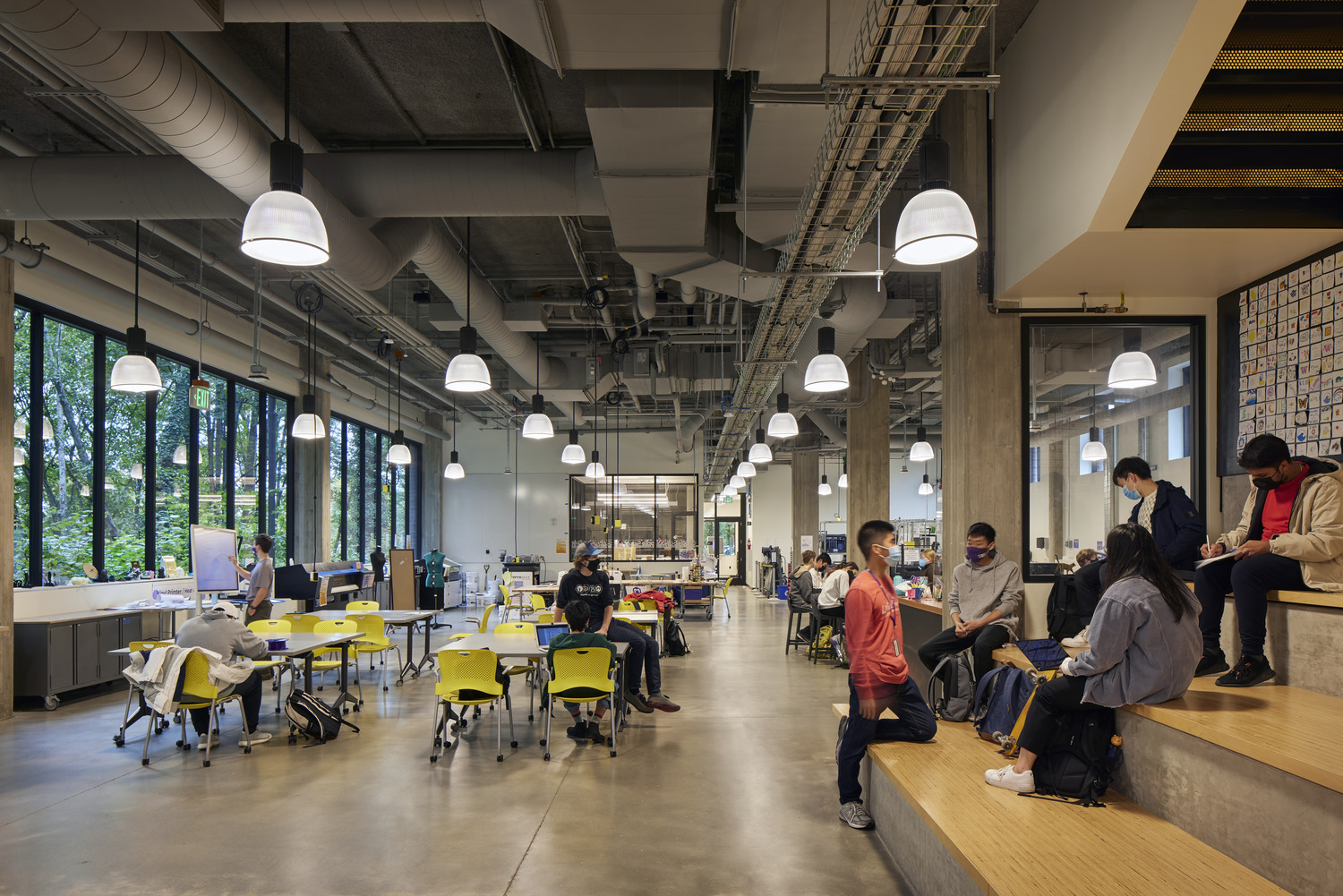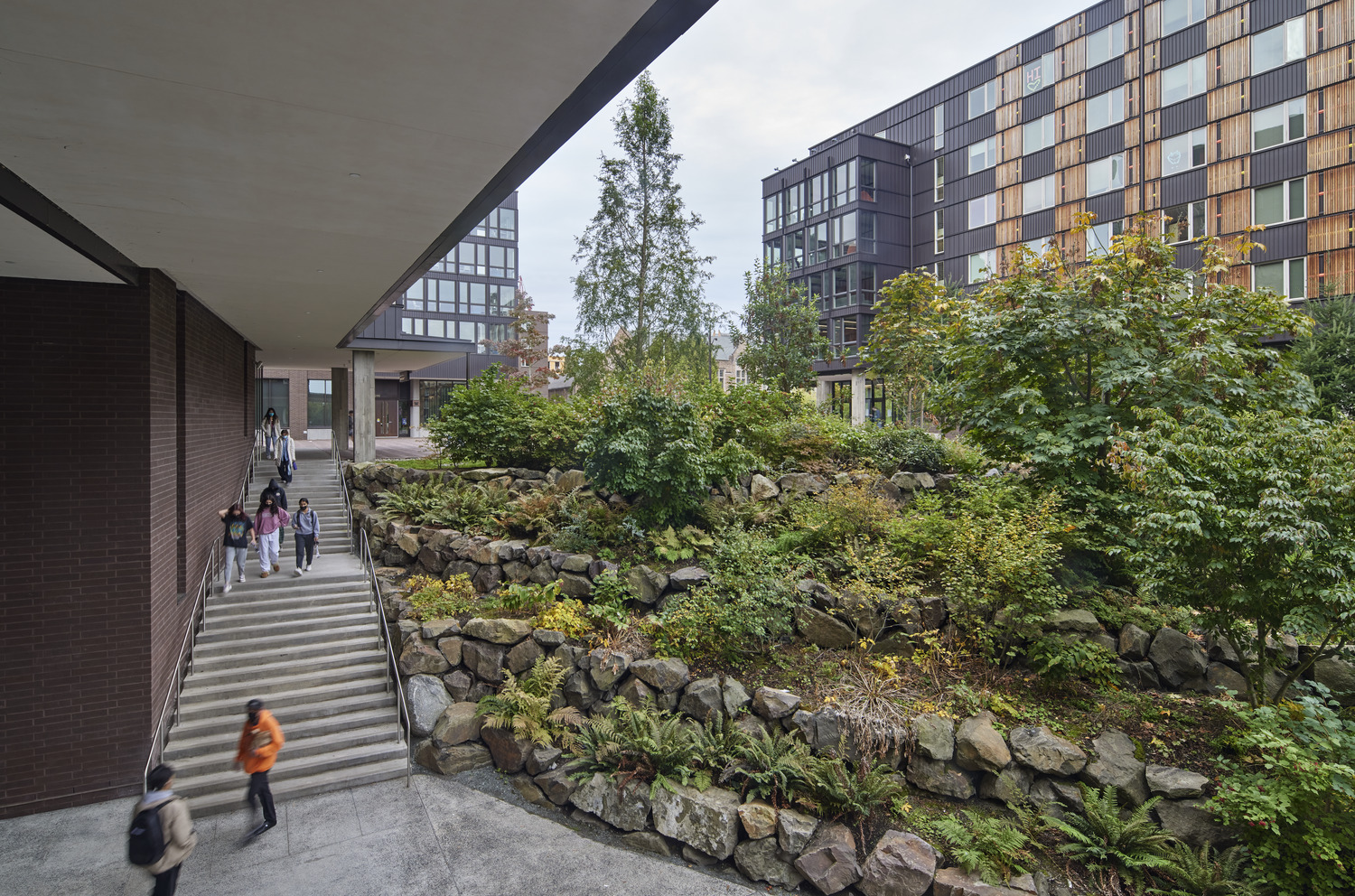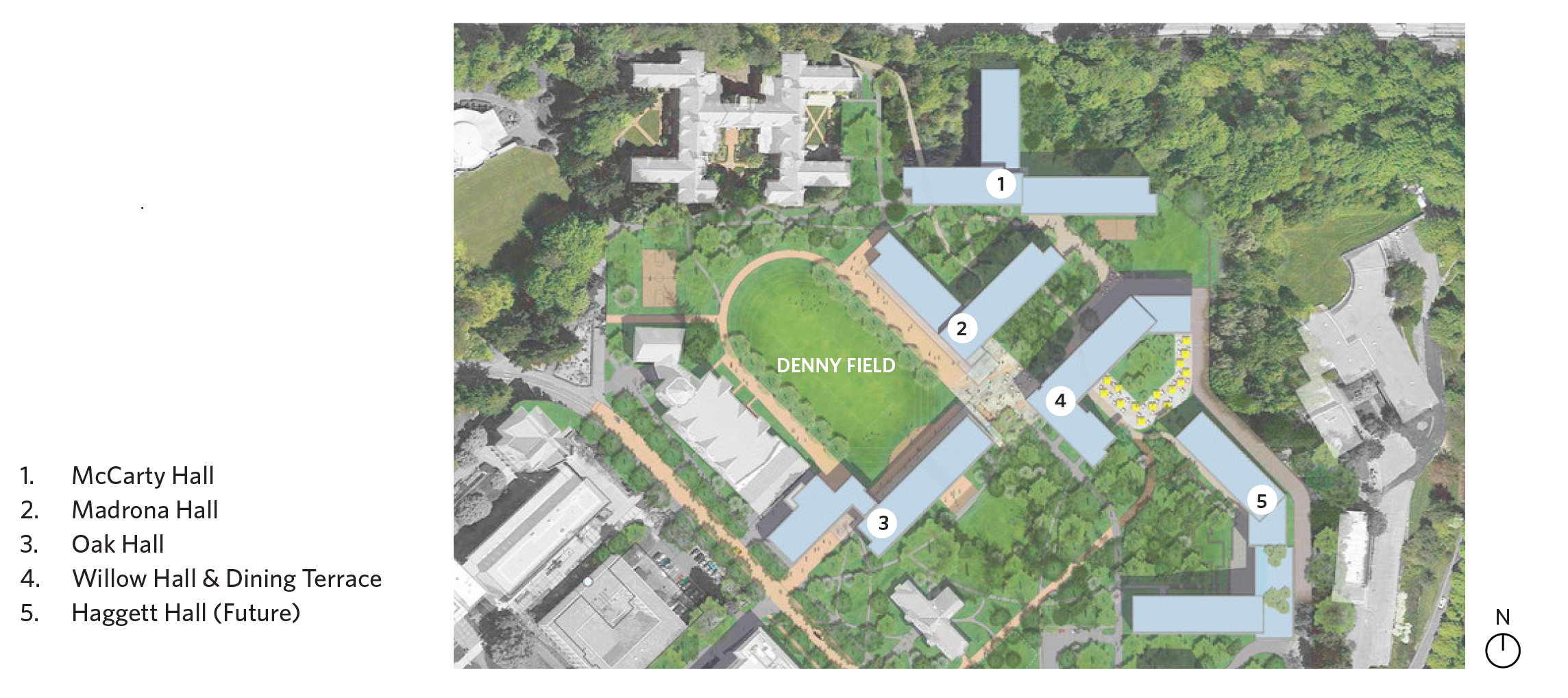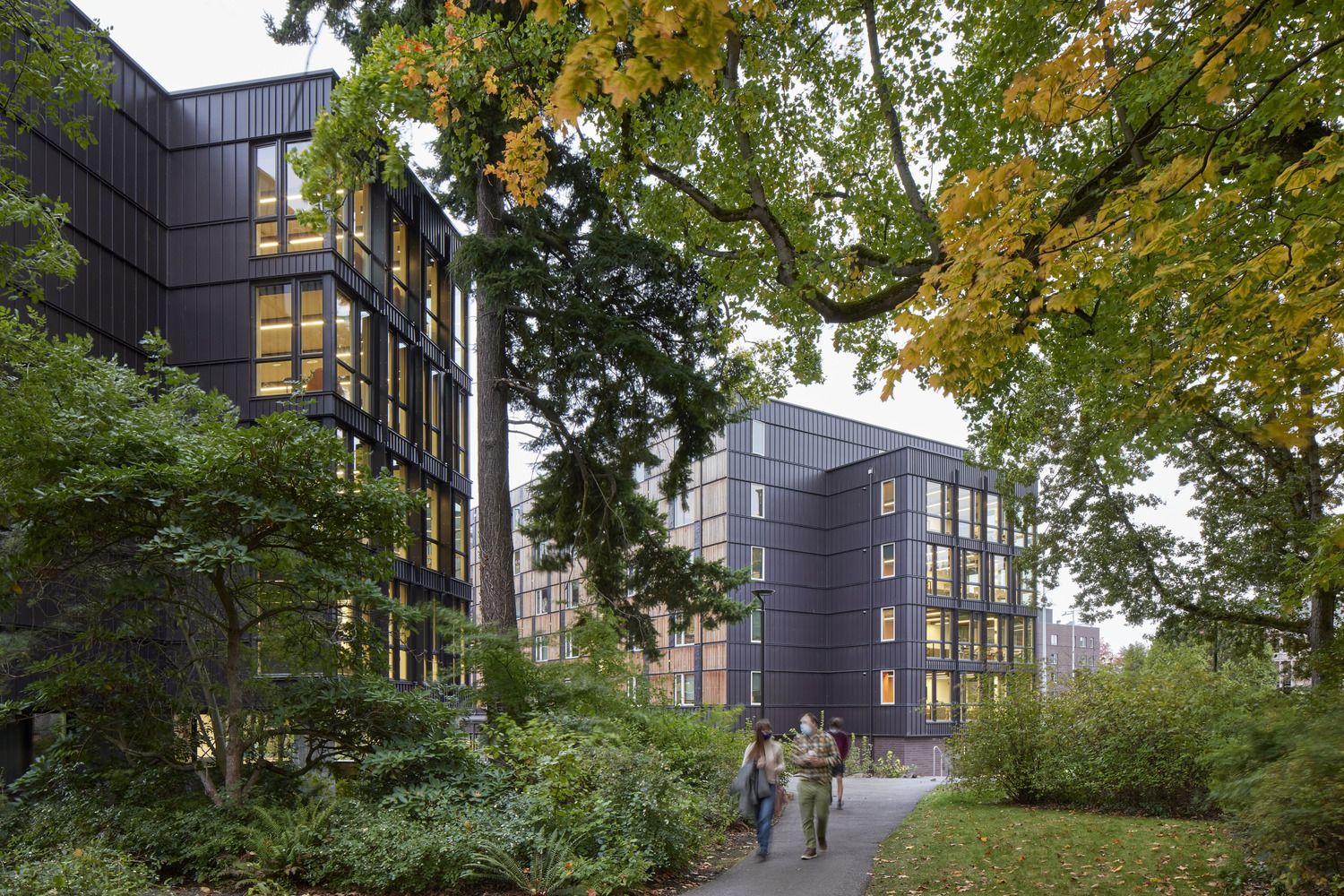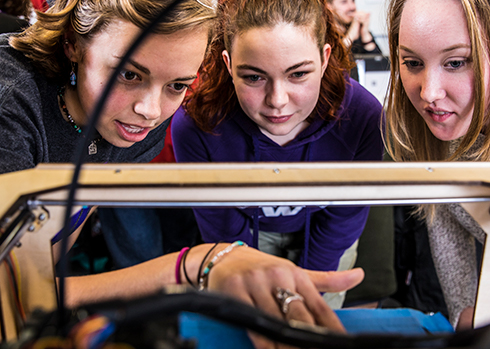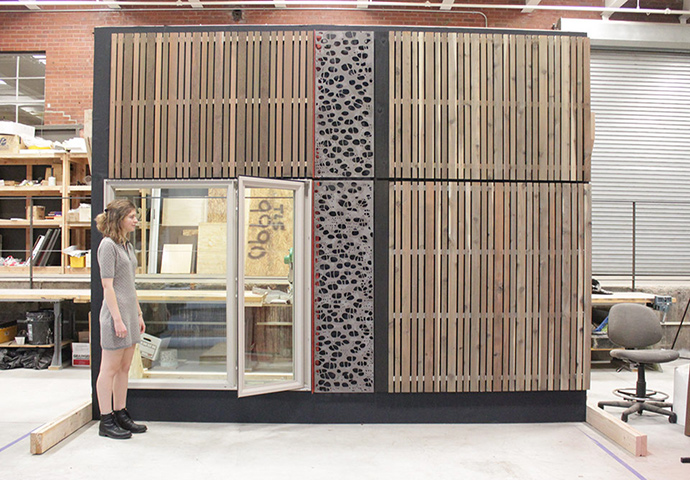How can an underutilized, heavily sloped part of campus become a bustling student neighborhood fostering cross-disciplinary engagement?
The University of Washington's LEED Gold-certified North Campus Housing neighborhood extends an historic campus fabric by weaving together four buildings and accompanying landscapes on a previously isolated and heavily sloped part of campus. The residences create a vibrant living-learning community for upwards of 2,000 students, fostering engagement and connection through dining, instruction, meeting, and recreation spaces.
The site plan demonstrates the relationship between North Campus Housing, historic campus buildings, and mature landscaping.
REFLECTING THE STUDENT EXPERIENCE
The neighborhood bustles with an intramural field, various student lounges, a student information help center, learning resource and tutoring center, classrooms, 300-person conference and event space, and the McCarty Innovation Learning Lab (MILL). Nestled alongside the Kincaid Ravine, the MILL is a collaboration between Housing & Food Services and the College of Engineering to provide easy access to makerspace tools, encouraging impromptu creativity and exploration within the student housing community.
With McCarty Hall at left and Madrona Hall at center, the buildings make use of stacked and aggregated floor lounges showcased in “lanterns,” breaking down the scale and providing a glimpse into active student life. The edges of the master plan, as seen here, embrace mature campus landscapes and highlight the rich natural environment of the Pacific Northwest.
© Bruce Damonte
SUSTAINABLE AND ACCESSIBLE
The core of North Campus is assembled in a pinwheel formation around the Town Square at its center, with a meandering mid-slope path worked into the hillside to achieve full accessibility while maximizing engagement of the space, both built and natural. Situated on a natural plateau that frames the east ridge along a dramatically sloping part of campus, the residences prioritize green space by reducing impacts on the landscape and maximizing solar orientation where possible. The western red cedar rainscreens complement the surrounding environment and mature trees. The cedar slats are organized vertically over metal battens to create performative rainscreen facades and a woven visual effect, with loose inspiration drawn from the rich history of basket-weaving traditions of the Pacific Northwest. Like the act of basket-weaving, the facades organically achieve ornament through the process of making, structure, and assembly.


